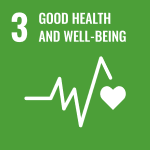Document Type
Article
Publication Date
7-1-2013
Keywords
Vitamin D, serum 25(OH)D concentration, older adults, diverse ancestry, Canada, community-dwelling
Abstract
Background: Physiological and lifestyle factors put older adults at an increased risk of vitamin D insufficiency and resulting negative health outcomes. Here we explore the vitamin D status in a sample of community dwelling older adults of diverse ancestry living in the Greater Toronto area (GTA).
Methods: Two hundred and twenty-four (224) adults over 60 years of age were recruited from the Square One Older Adult Centre, in Mississauga, Ontario. Circulating 25-hydroxyvitamin D (25(OH)D) concentrations were measured from dried blood spot cards. Dietary and supplemental intakes of vitamin D were assessed via questionnaires. Skin pigmentation was assessed quantitatively by measuring melanin levels using a reflectometer.
Results: The mean 25(OH)D concentration in the total sample was 82.4 nmol/L. There were no statistically significant differences in serum 25(OH)D concentrations, supplemental or dietary vitamin D intakes between the three major ancestral groups (East Asians, Europeans and South Asians). Females had significantly higher 25(OH)D concentrations than males (84.5 nmol/L vs. 72.2 nmol/L, p = 0.012). The proportion of participants with 25(OH)D concentrations below 50 nmol/L and 75 nmol/L were 12.1%, and 38.8%, respectively. The mean daily supplemental intake of vitamin D was 917 IU/day. Vitamin D intake from supplements was the major factor determining 25(OH)D concentrations (p < 0.001).
Conclusions: Mean concentration of 25(OH)D in a sample of older adults of diverse ancestry living in the GTA exceeded 80 nmol/L, and there were no significant differences in 25(OH)D levels between ancestral groups. These results sharply contrast with our recent study focused on young adults of diverse ancestry living in the same geographic area, in which we found substantially lower 25(OH)D concentrations (mean 39.5 nmol/L), low supplemental vitamin D intake (114 IU/day), and significant differences in 25(OH)D levels between ancestral groups. High daily intake of supplemental vitamin D in this sample of older adults likely accounts for such disparate findings with respect to the young adult sample.
Faculty
Faculty of Humanities & Social Sciences
School
School of Social and Life Sciences
Journal
BMC Geriatrics
Version
Publisher's version
Peer Reviewed/Refereed Publication
yes
Terms of Use
Terms of Use for Works posted in SOURCE.
Copyright
© 2013 Ginter et al.; licensee BioMed Central Ltd
Creative Commons License

This work is licensed under a Creative Commons Attribution-Noncommercial-No Derivative Works 4.0 License.
Original Publication Citation
Ginter, J. K., Krithika, S., Gozdzik, A., Hanwell, H., Whiting, S., & Parra, E. J. (2013). Vitamin D Status of Older Adults of Diverse Ancestry Living in the Greater Toronto Area. BMC Geriatrics 13, 66.
SOURCE Citation
Ginter, Jaime K.; Krithika, S; Gozdzik, Agnes; Hanwell, Heather; Whiting, Susan; and Parra, Esteban J., "Vitamin D Status of Older Adults of Diverse Ancestry Living in the Greater Toronto Area" (2013). Faculty Publications and Scholarship. 1.
https://source.sheridancollege.ca/fhass_soci_publ/1



